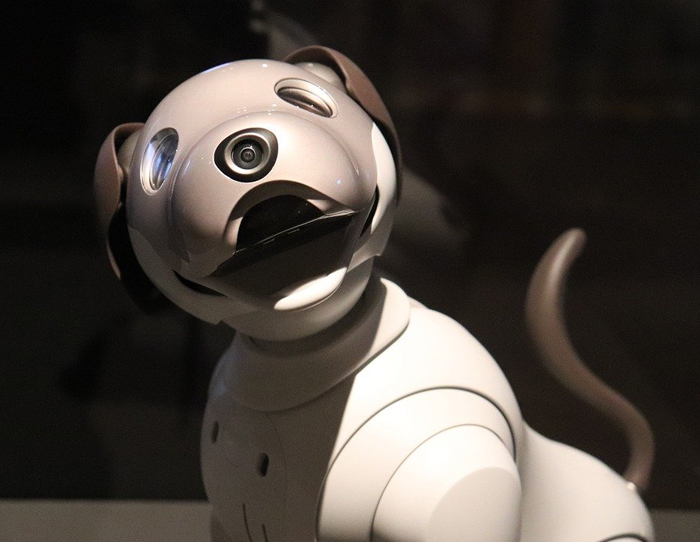
The animatronic age has passed me by. There’ll be no robot assistants or food servers in my house. I’m positive of that! Unless a robotic medical device is a part of my future, I won’t be affected by the latest robotic devices.
Or Will I?
In a recent New York Times article I read about loneliness and robotic pets for the aging population. The article opens with the surprising description of a 90-year-old shut in who lost her husband two years ago. That isn’t the surprising part. She sits on her couch, contentedly, with a robotic cat that has a body and fur like a real cat, with green eyes that stare, and open and close naturally. This “pet” is programmed to nuzzle, stretch, vibrate, and meow, and this elderly shut-in is thrilled to have her pet cat. She knows it’s not real but, nevertheless, she feels comfort when it leans against her stomach and sort of purrs. I was surprised that this elderly woman was receiving comfort from a robotic pet. I was even more surprised to learn that these cats and dogs are available on Amazon; check them out here.
The Costs of Isolation
It’s estimated that the effects of social isolation for the aging population – us! – adds nearly $7 billion a year to the total cost of Medicare. Isolated people show up to doctors’ officers sicker and stay longer in hospitals than those of us who aren’t experiencing loneliness.
Behind the creation, production, and effective use of robotic cats and dogs is a ton of research from myriad organizations, including AARP and Stanford University, working in conjunction with state governments.
In 2018, New York State’s Office for the Aging created a pilot program to distribute the life-like robotic pets to those over 65 years of age and then track those individuals to identify feelings of loneliness using a point system. At the end of one year, 70% of respondents with robotic pets reported feeling ‘less lonely.’
Then the pandemic hit. Many state services for the aging were closed, which made the seniors’ worlds smaller still. More loneliness was reported with the loss of day programs and communal dining sites. Requests for the robotic pets skyrocketed and, with the availability of these robots online, they have been very successful in providing comfort to alleviate feelings of isolation in sequestered elder populations.
It Can be Good Even if it’s Not the Real Thing
Obviously, a robotic cat or dog doesn’t have all the desirable qualities of a real pet that adheres to your particular traits that are learned over time. On the positive side, no resident has to buy food or deal with waste issues, which is a plus for many. As with the 90-year-old mentioned above, robotic pet owners enjoy talking to and sitting with their animals. A pet helps keep non-mobile seniors from being as lonely and uncomfortably shut in, which has been critical during the particularly stressful year we’ve had with COVID. For those of us who are mobile, it’s hard to imagine how lonely it can be without any contact at all.
During the quarantined time, seniors who interacted with animatronic pets for sixty days expressed greater optimism and a greater sense of purpose. While this study didn’t compare feelings with robotic pets compared to feelings interacting with humans, it’s obvious there is value that is provided with the furry animatrons.
The future of robotic pets isn’t guaranteed. There are perceived problems dealing with socialization of these pets over the human experience. Some researchers question the well-being of an elder resident who is able to convince themselves that the pet is real enough in order to benefit from a greater sense of well-being by its presence.
As you know, I have a cat, and I can care for my cat, which is extremely important to my happiness and decreased feelings of loneliness. There are, however, people who aren’t like me, and I believe they deserve to try the robotic pet experience to see if it helps them feel better. What’s the harm?

